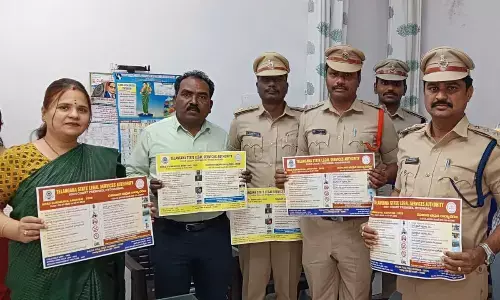Wealth, inequality and children's rights to survival in India
 Wealth, inequality and children’s rights to survival in India
Wealth, inequality and children’s rights to survival in IndiaThe Credit Suisse Research Institute's Global Wealth Report 2018 places India's total wealth at Rs 3,881.8 lakh crore. Out of this, the wealth equivalent to Rs 3,012.28 lakh crore (78 per cent) was under the control of the wealthiest 20 per cent of India.
The next 40 per cent persons possessed wealth equivalent to Rs 869.52 lakh crore (22.4 per cent). This segment is known as the "middle class" of India, which considers remittances of Equated Monthly Instalments for two-wheelers, four-wheelers, HD television and home loans as life's biggest aims. This class of people does not consider environment, drying up of rivers, increasing violence, communalism and democratic values as matters of prime concerns.
The poorest 20 per cent of the country are not only deprived of wealth, their (170 million persons) wealth is rather negative at Rs 34 lakh crore, as one derives from the Credit Suisse 2018 Report. This report also informs that the wealthiest one per cent adults in India have wealth equivalent to Rs 997.6 lakh crore.
It means that these one per cent Indians possess control over the total wealth of 80 per cent of Indians. Therefore, it is natural for the question to arise as to what freedom or public welfare can be expected from a dispensation that ignores this phenomenon. Is it a mark of good economic policy that 1.34 billion people are made the colonial subjects of the one per cent capitalists?
Impact of inequalities on children and their well-being
When we make a preliminary analysis of the findings of National Family Health Survey — 4 (NFHS — 4) in terms of classification by urban and rural areas, it becomes clear that that malnutrition in rural areas, in the form of "stunting" (low height-for-age), "wasting" (low weight-for-height) and "underweight" (low weight-for-age), is highly prevalent
In contrast to the urban areas where 31 per cent children suffer from "stunting", 41.2 per cent rural children are stunted. Likewise, there is a difference as far as "wasting" is concerned. As compared to 19.9 per cent urban wasted children, there are 21.4 per cent wasted rural children. In case of underweight, the differentiation is sharper; 38.2 per cent rural children are underweight as compared to 29.1 per cent urban children.
The findings of NFHS — 4 make it abundantly clear that wealth Inequality has a direct relationship with wasting, stunting and women's nutritional status. The findings also inform that the highest wealth quintile of 20 per cent section of the society had a Neonatal Mortality Rate of 14.6 per cent whereas it was three times, ie., 40.7 per cent for the lowest wealth quintile 20 per cent households.
Likewise, it is observed that the highest wealth quintile of 20 per cent section of the society had an Infant Mortality Rate at 19.8 per cent whereas it stands at 56.3 per cent (almost three times) for the lowest wealth quintile people. In a similar vein, a huge difference is noticed in the Under 5 Child Mortality Rate; it is 22.6 per cent for the highest wealth quintile of 20 per cent people whereas it is 71.7 per cent for the lowest wealth quintile populace.
Wealth inequality also shows up in indicators such as 'Severe Stunting', 'Severe Wasting' and 'Severe Underweight'. Also, it is notable that women's Body Mass Index (BMI) is poorly placed (below 18.5 Kg/M2) for 35.8 per cent women of the lowest wealth quintile as compared to the 11.6 per cent among those at the highest wealth quintile.
Linkages of education with malnutrition, child mortality and domestic violence
Malnutrition and education of women too appear to be closely linked. The results of NFHS — 4 indicate that children of women who had 12 or more years of schooling, had severe stunting at 8.7 per cent, in contrast to 24.8 per cent of children born to women who had no education at all. Similar findings are seen for chronically undernourished children, where the corresponding figures of stunting are 23.8 per cent for women having had 12 or more years of schooling and at 50.7 per cent for those without education.
The corroboration of deep linkages between underweight children and the education of mothers is also evidenced. The proportion of underweight stood at 21.8 per cent for children of mothers having had schooling of 12 or more years, while it was at 46.8 per cent for children whose mothers had no education.
NFHS — 4 also brings out that women's experience of violence declines sharply with women's schooling: From 43.5 per cent for no schooling to 17.7 per cent with 12 or more years of schooling. Similarly, the phenomenon ranges from 45.8 per cent among women in the lowest wealth quintile to 19.2 per cent among women in the highest wealth quintile!
Conclusion
Apparently, economic policies for India's development are serving the few "haves" among whom wealth is concentrated. The state intent is not really addressing the creation of a mechanism that renders equitable distribution of resources and opportunities. The definition of "development", which the country is pursuing, is manifesting in unemployment, food insecurity, crisis of health, deterioration of quality in education, commercialisation of services and extreme economic poverty.
-Sachin Kumar Jain
(Courtesy: Down to Earth)















